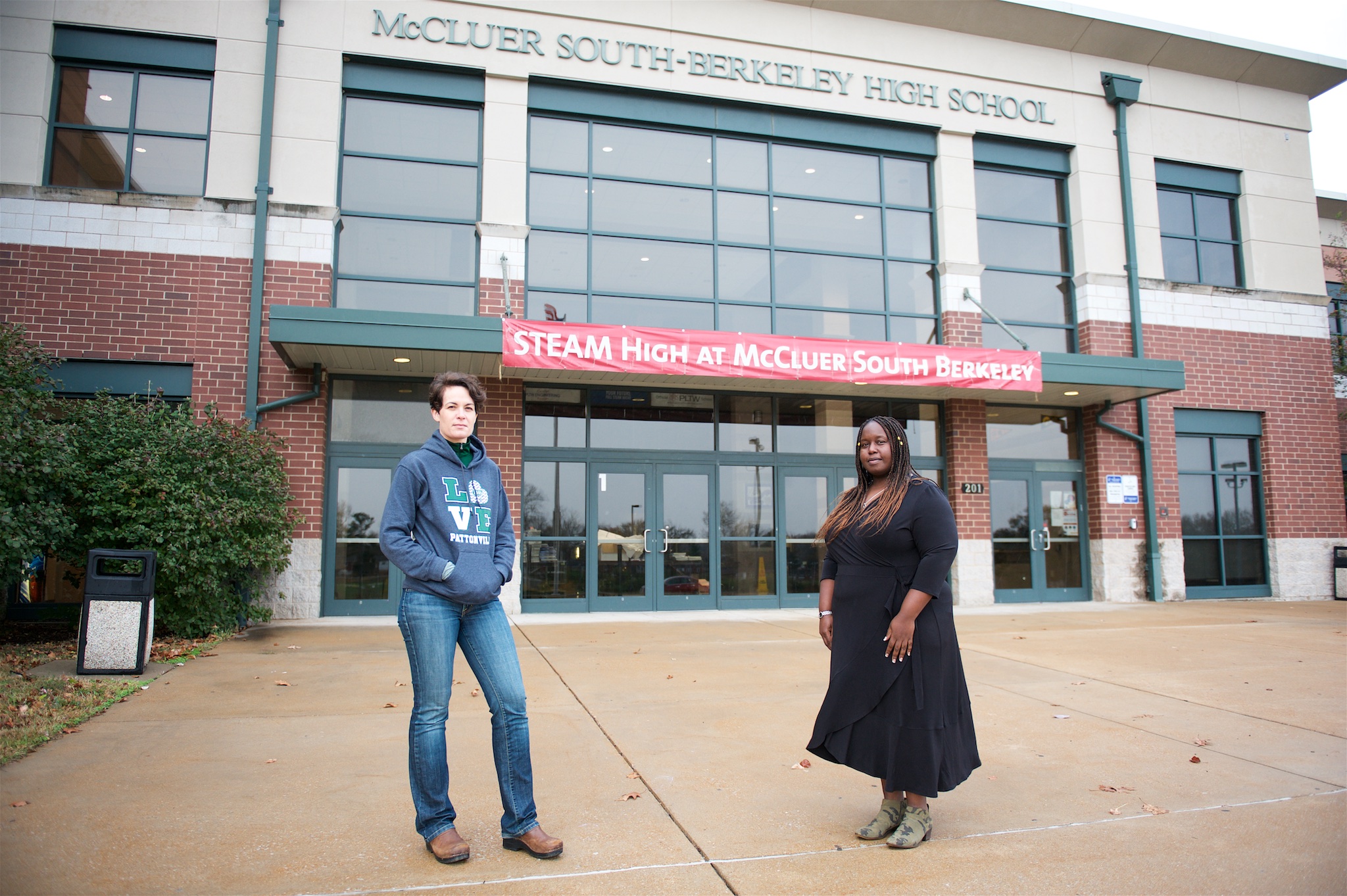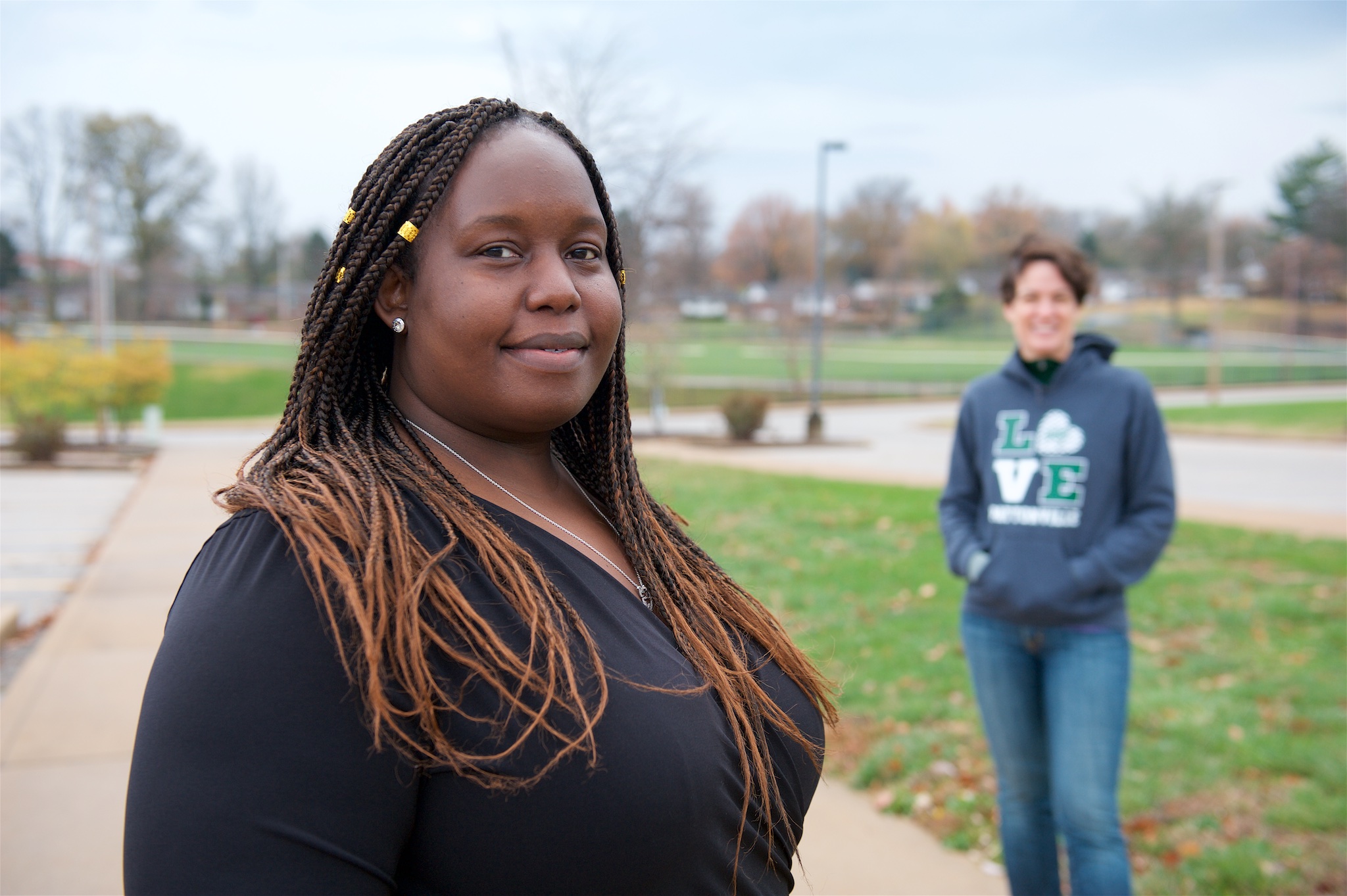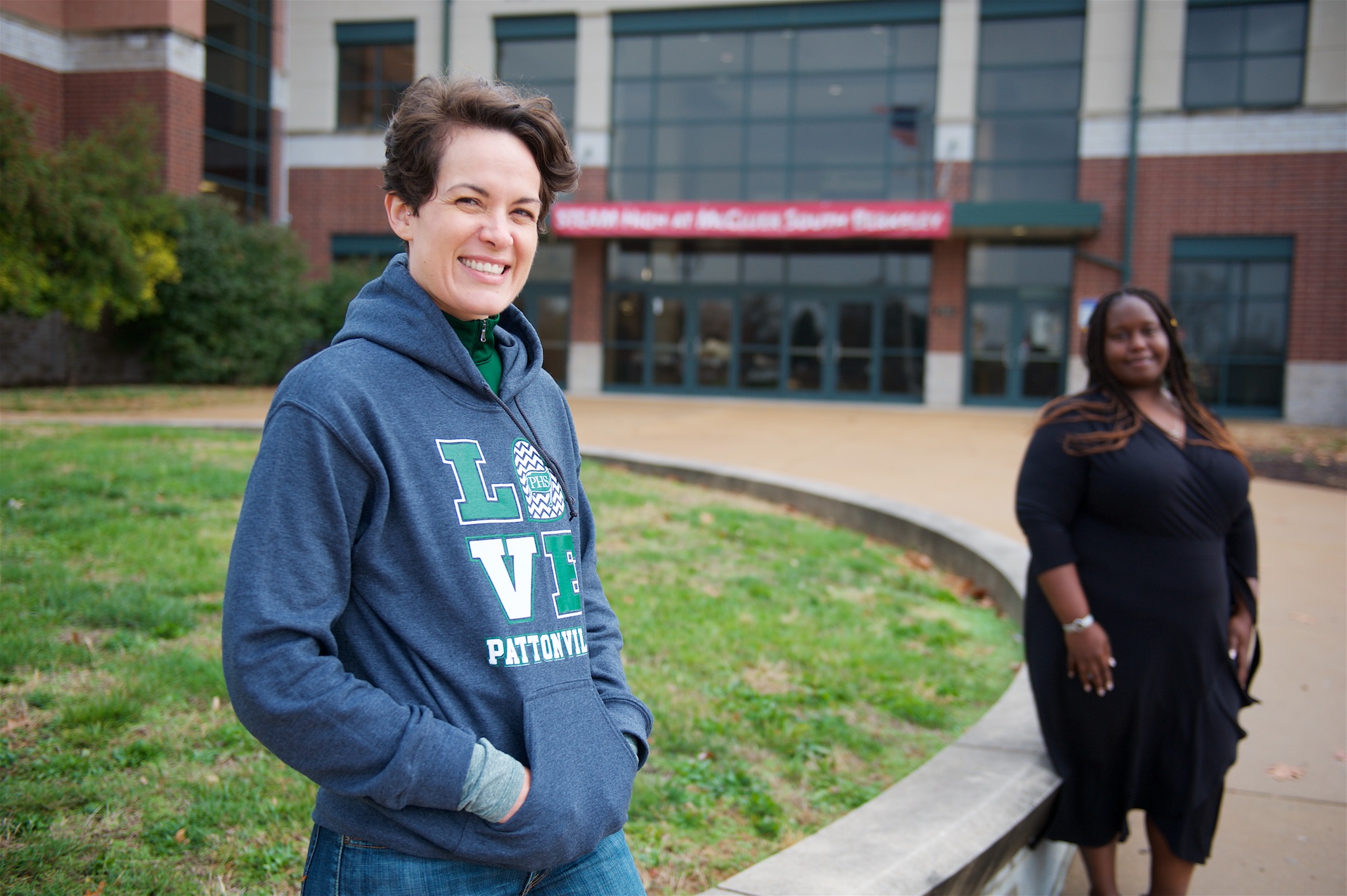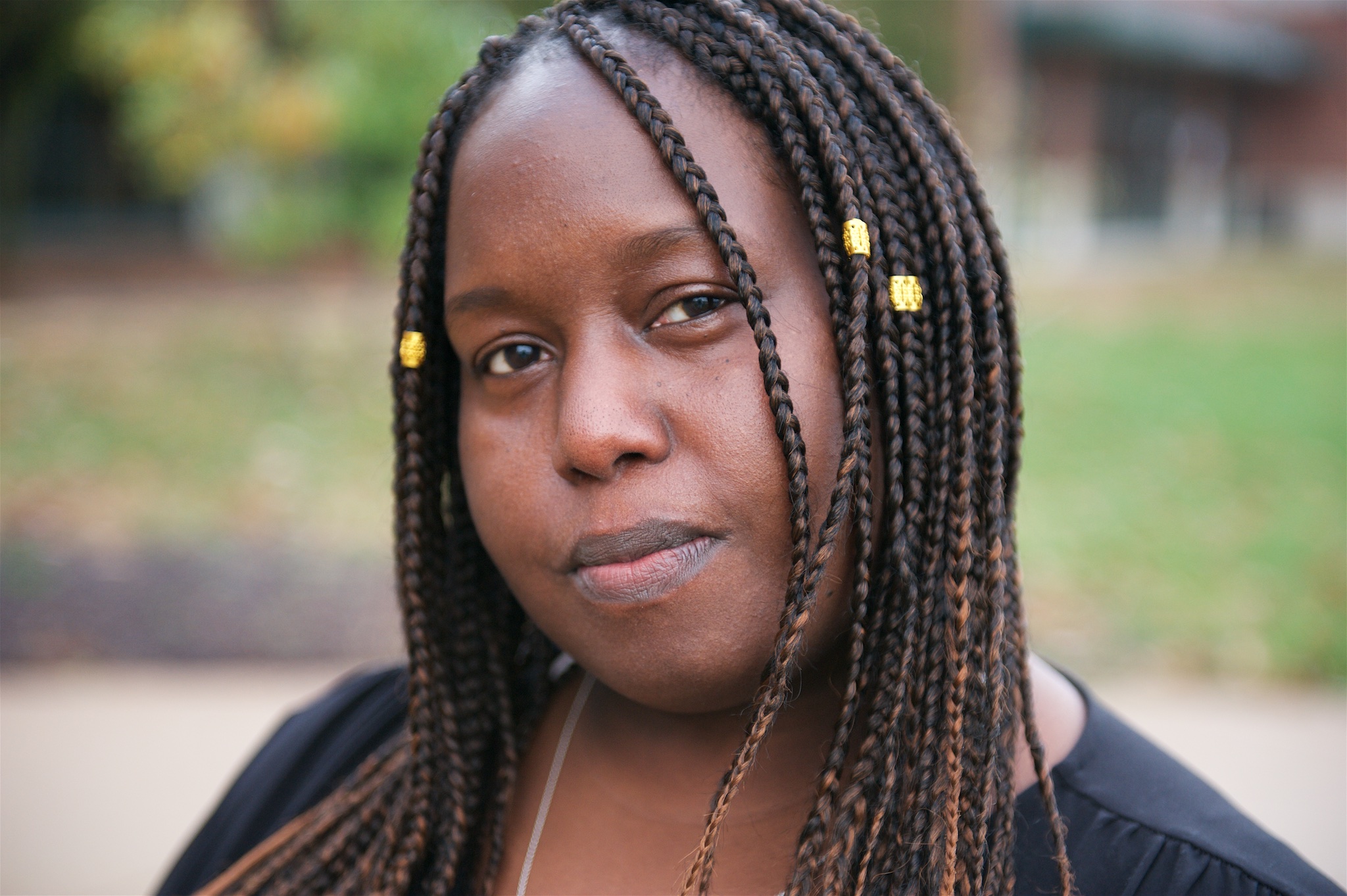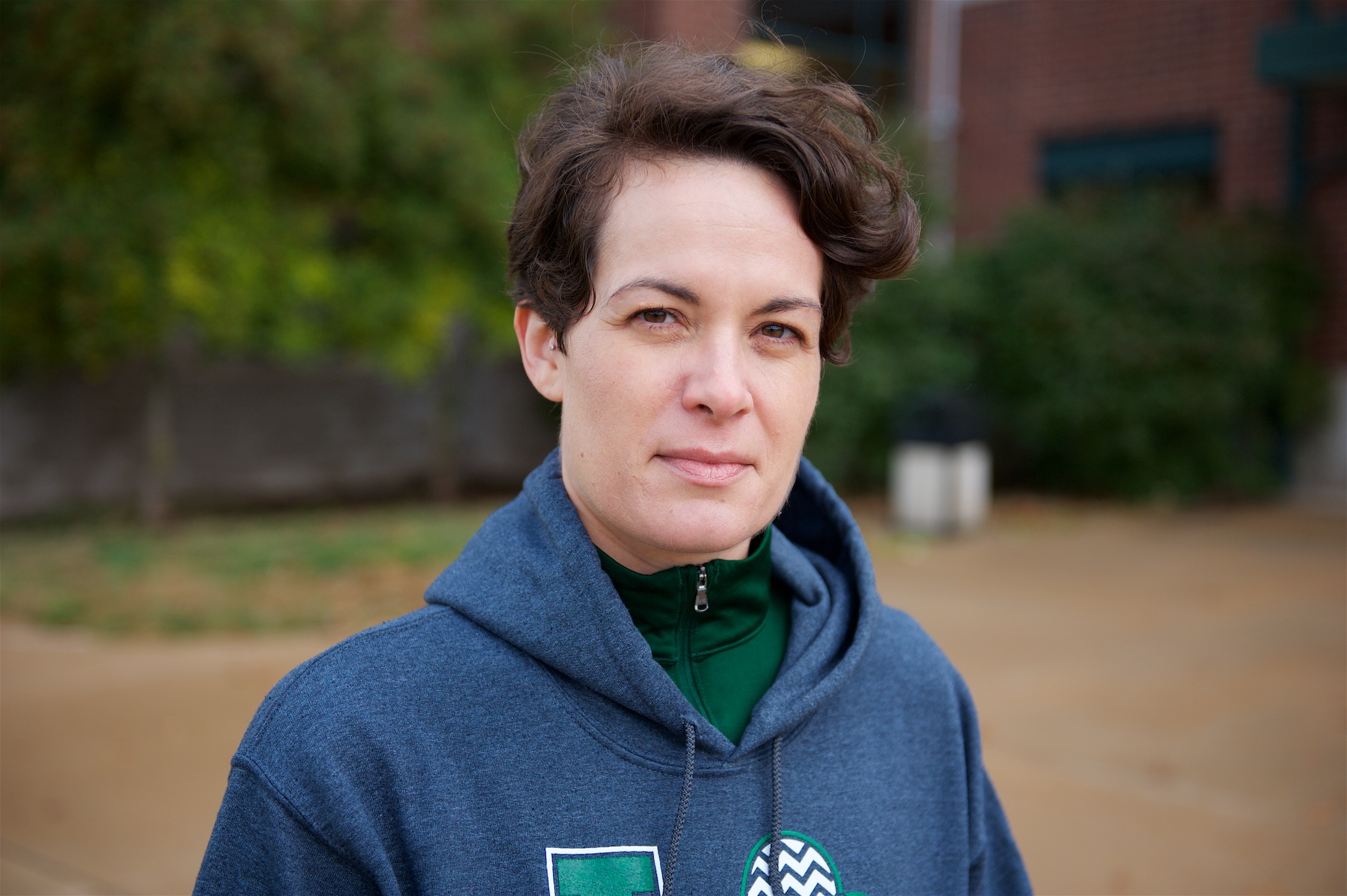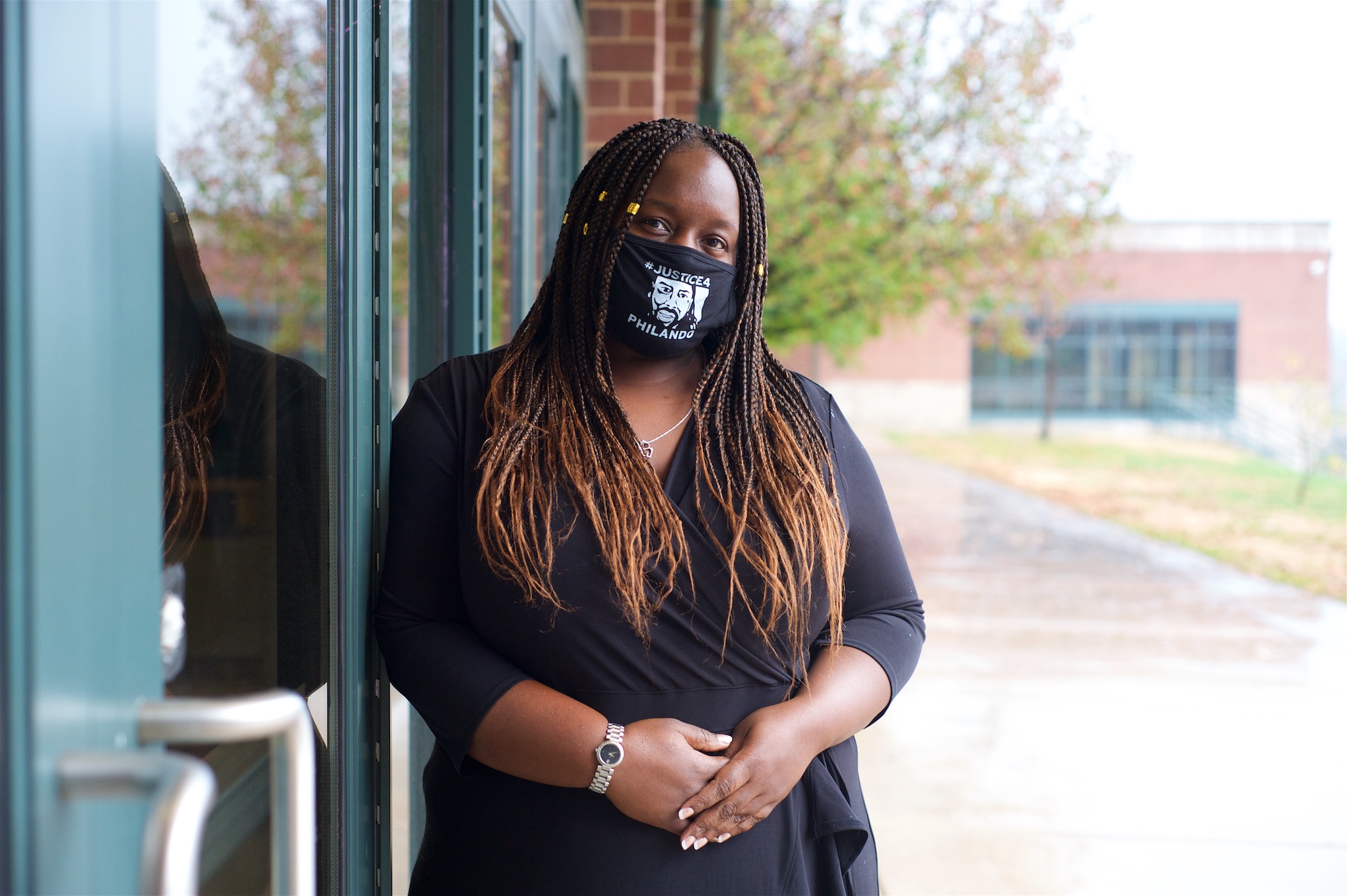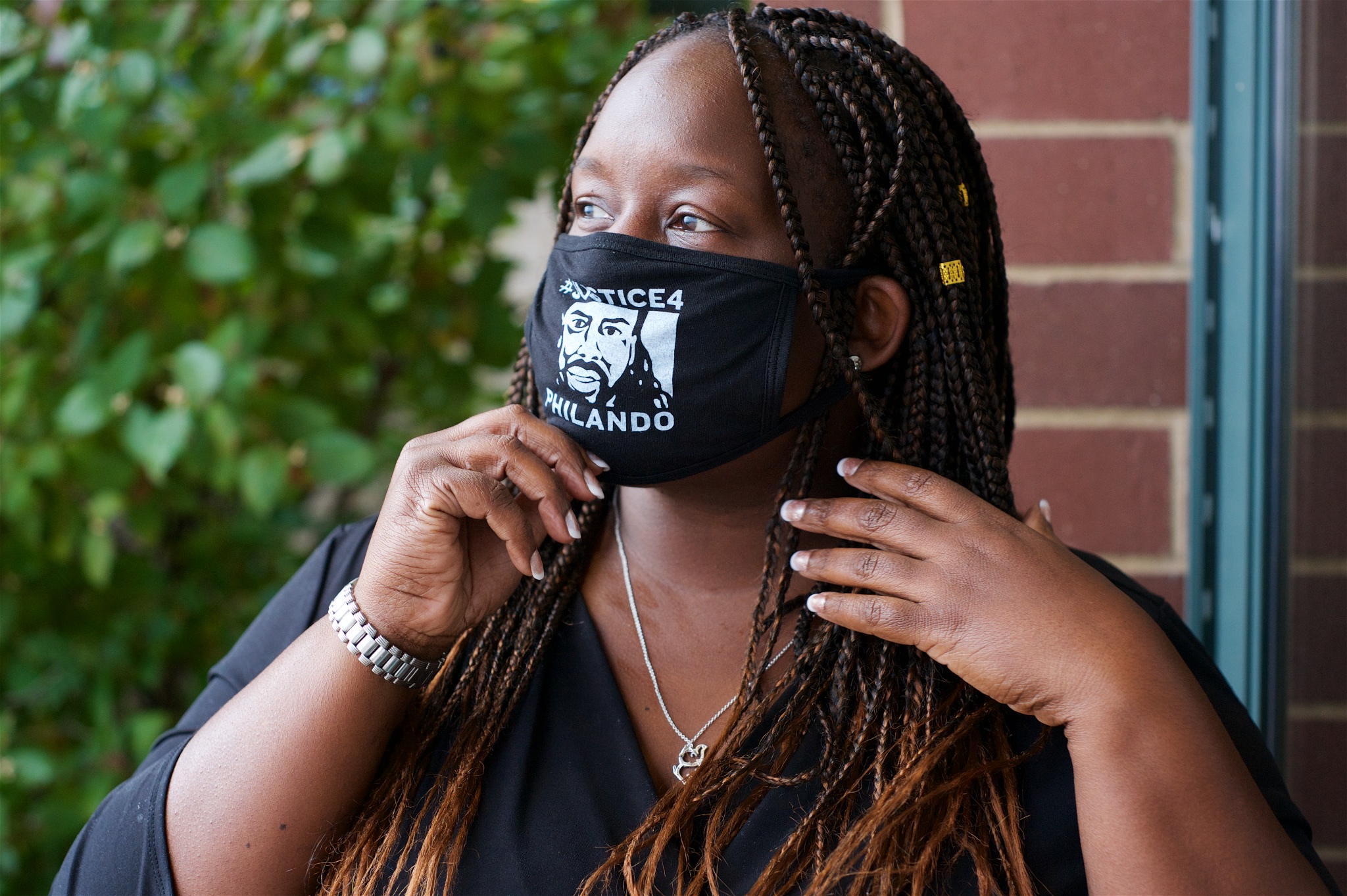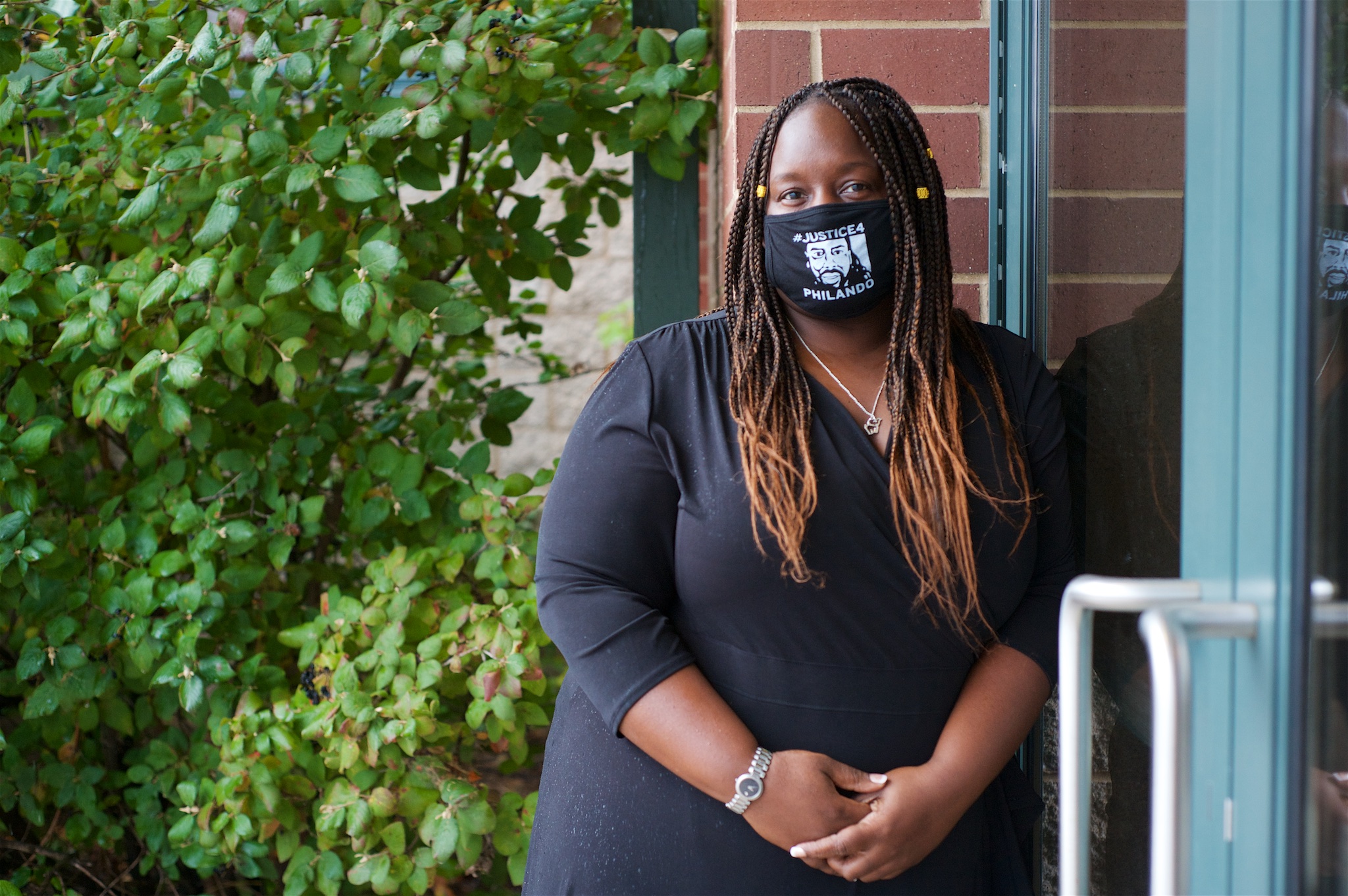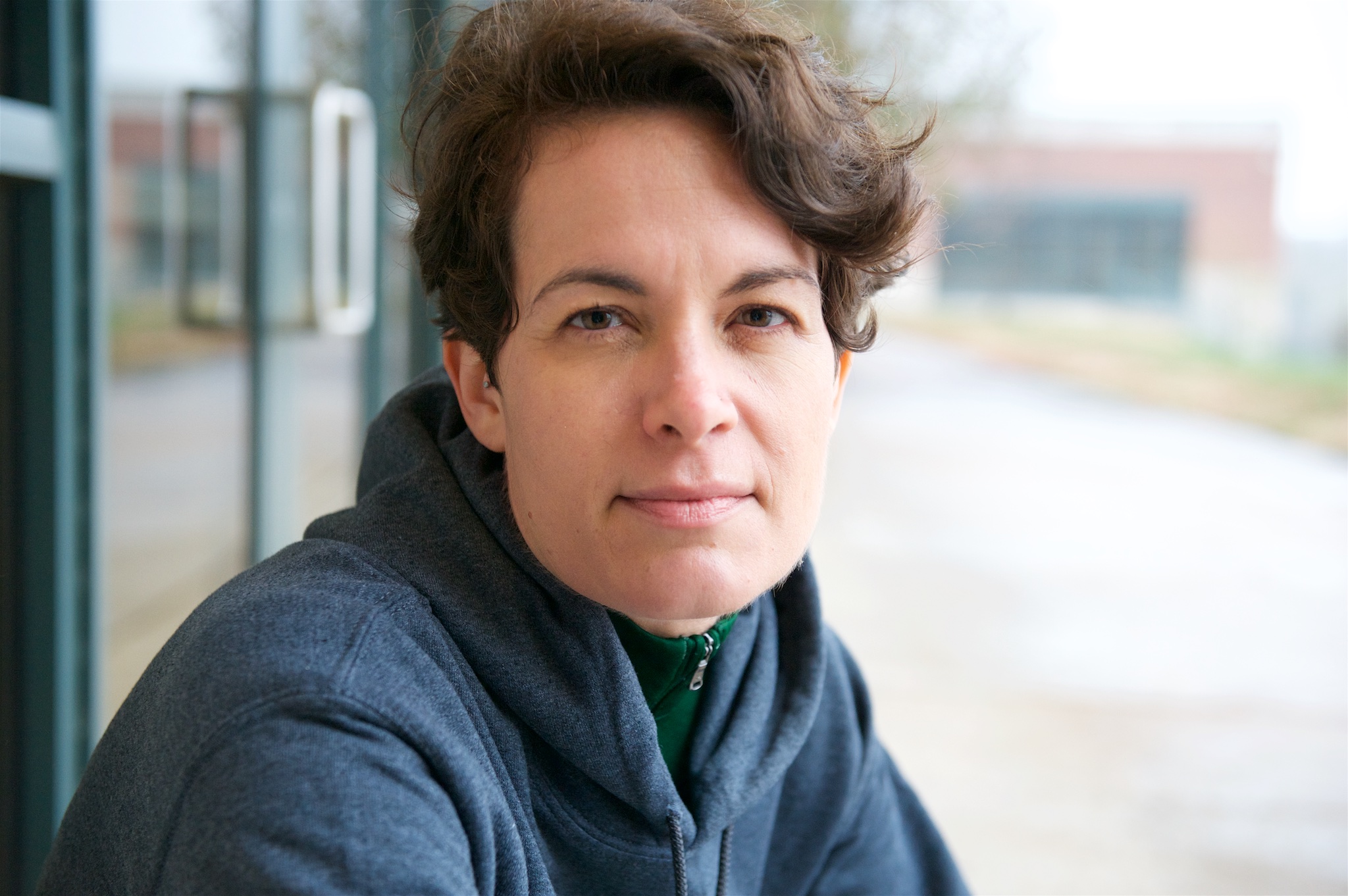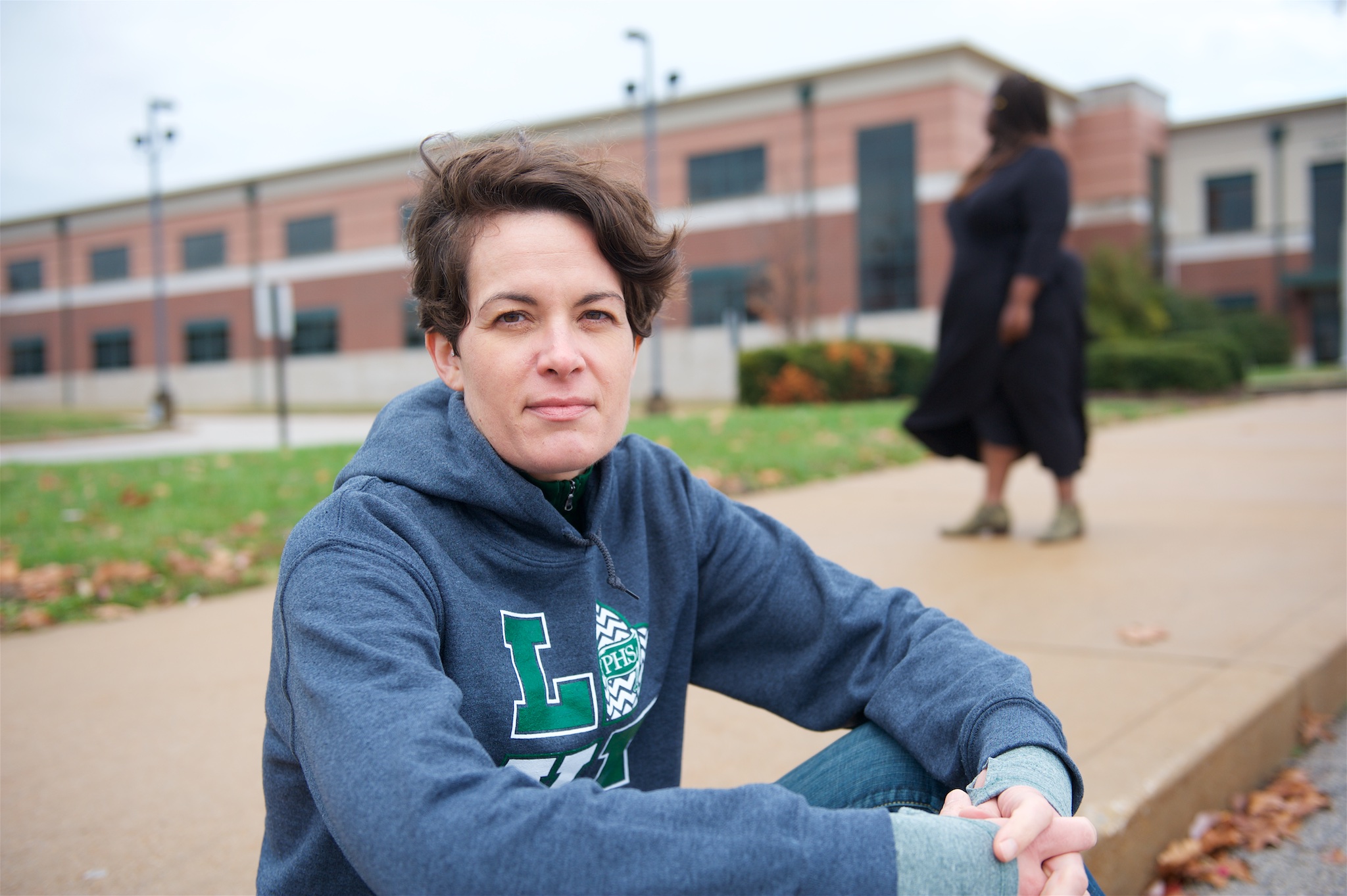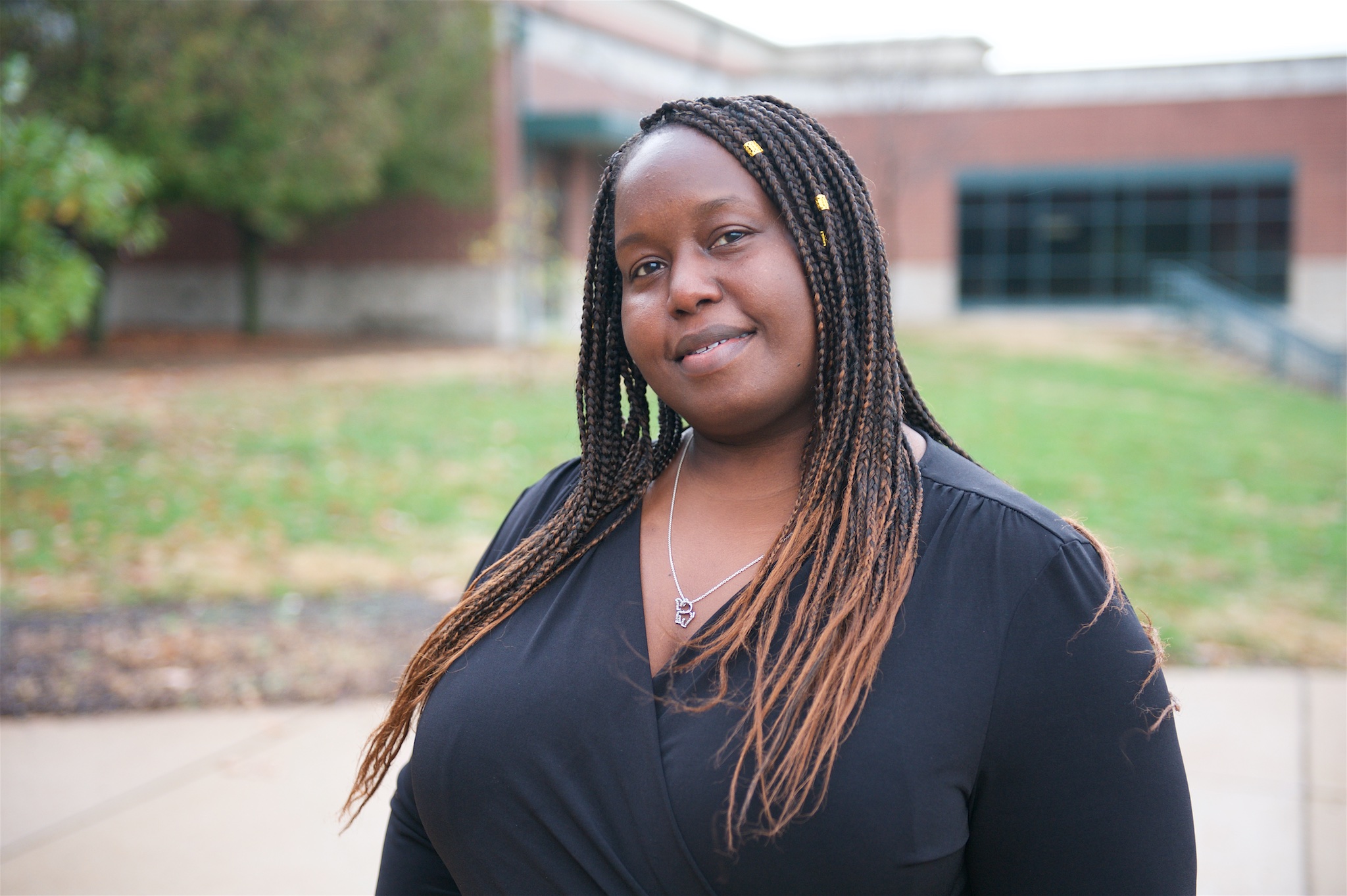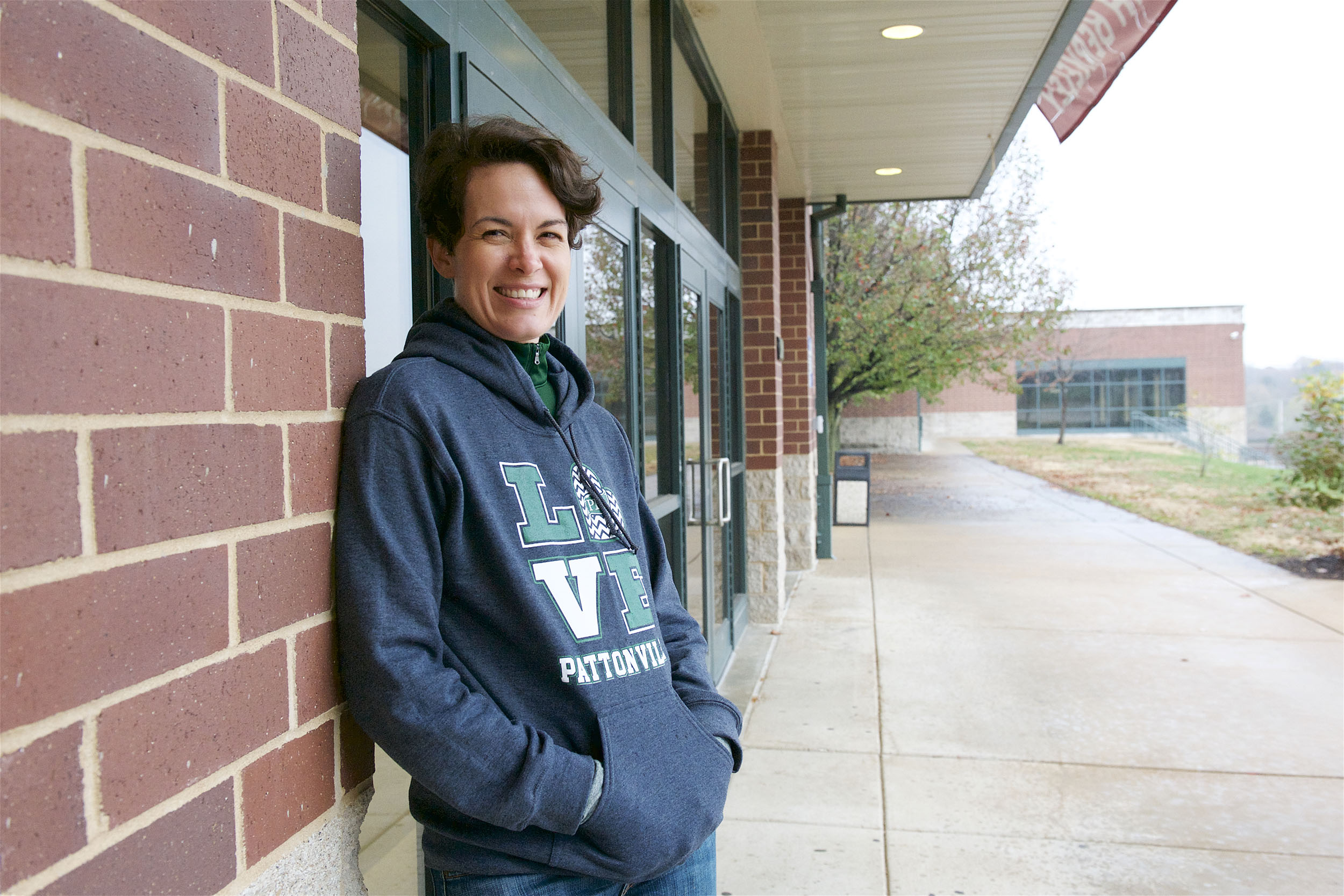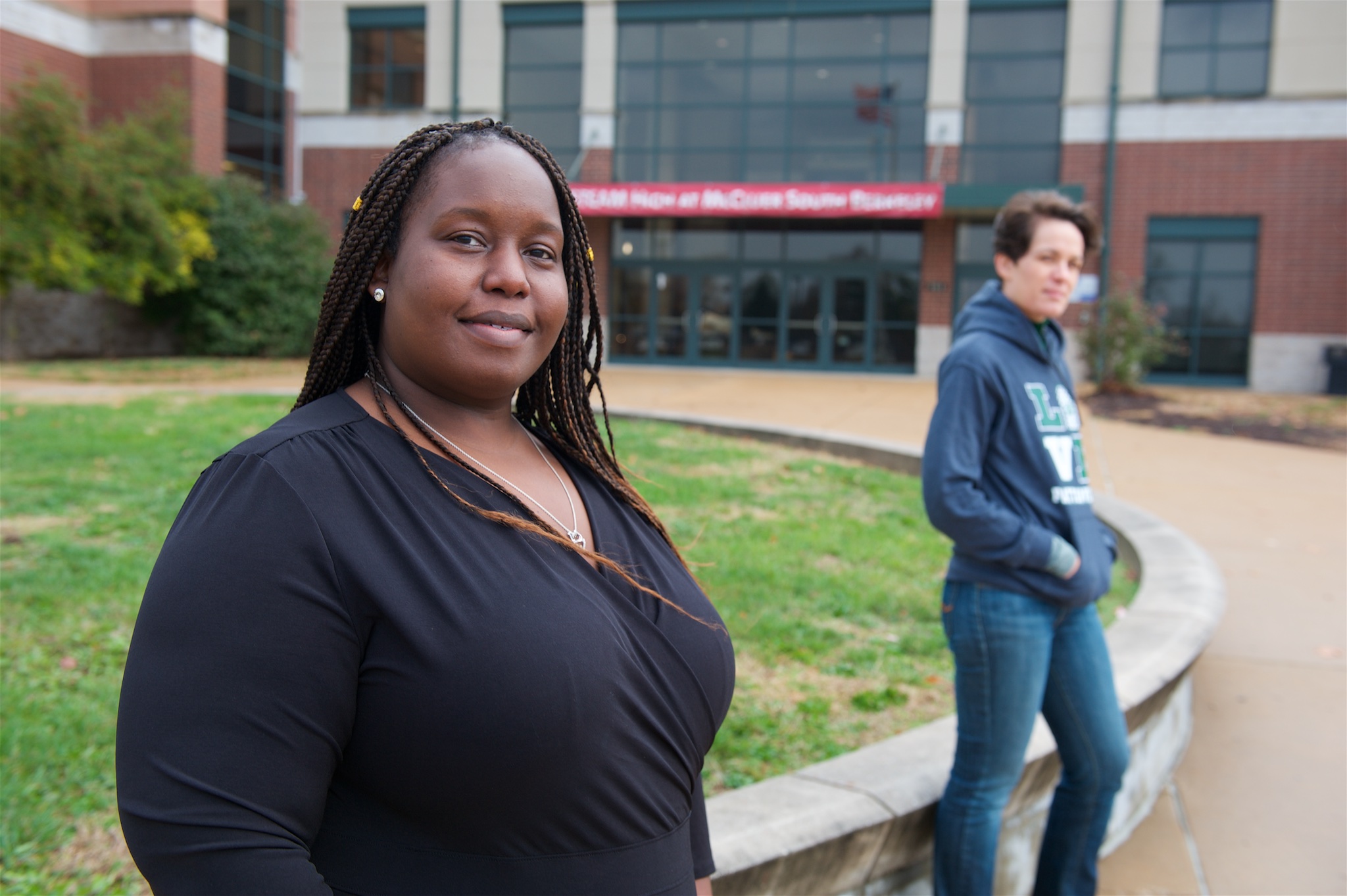Dr. Courtney M. Graves and Dr. Amanda L. Purnell
Photostory and photos by Lindy Drew / Humans of St. Louis
Courtney: While events were unfolding around the time Mike Brown happened, I remember I was in the basement with my youngest brother and my two sons and we were watching it unfold on television. Everybody was outside protesting and I was scared, so I was not going to go out there. But I felt like I needed to do something. I am a product of the Ferguson-Florissant School District and I wanted to give back to my school in some kind of way. I wanted to be at a place where I could create systems and policy and make changes. That’s how I ended up on the school board. By trade, I am a licensed professional counselor. I work with youth facing adverse experiences and who have gone through trauma.
Amanda: I’m a psychologist by training and I feel strongly about resilience, wellness, and how we communicate with people. I got involved in education not because that was a natural fit for me, but it came out of my experiences with my very different children. I have one child who’s gifted in one way and I have another child who has developmental delays. I was profoundly impacted by the teachers who interacted with my young people and by seeing the ways in which we had to step up to support our kids. Knowing that my husband and I had the resources to do that, we see and are aware of the challenges for the many families who don’t. So, I wanted to make sure every child was cared for, not because I saw a deficit, but because I saw an opportunity to use my listening ears as the psychologist, listen to my community, and reflect that back into the system.
It was 2017 — the Year of the Woman — and it had never, ever, ever occurred to me to run for any kind of office. In fact, I’m a government employee. I cannot run for any office except the school board. I was involved in We Stories at the time and encouraged by other families to be more active beyond and above volunteering, mentoring, and teaching to be whatever a public figure means, whatever being on a school board means. So I took a step way outside my comfort zone and put my name on a ballot. I could have easily hung inside my comfort zone. No one was pushing me. But I felt it was important to go outside of that. So, I did.
Courtney: When I got on the school board, we only had one person of color. Getting on the board made me the second person of color in a school district that is predominantly African-American. So, being placed at a table when you know for sure that you don’t have a voice, that you’re not in the majority — it was difficult. And being a woman of color, it’s always difficult because we have to fight 10 times harder when we’re in particular positions. But that pushed me. It pushed me as a board member and into getting my distinguished certification. Some other board members just did the essential and that was it and they were fine and they served on the board for many, many years. For me, even with a position on the board, I still had to prove myself. I had to make sure I was the most qualified and knew what I was talking about when I was sitting at that table. Then I had to figure out where my voice would be best used. So when making decisions, I have to find a way to make the best impact knowing some of the decisions I feel best about will never even be seen to fruition.
In my first few years on the board, my question was always, “What about the rest of the schools?” What about schools in different areas? Missouri’s relatively large, but one side of I-270 is treated differently than the other. Growing up in the Ferguson-Florissant School District, I experienced it. So being able to sit at a table and say, “Hey, if something’s going on at that school, it definitely needs to go on at this school” was my thing. And it got to a point where anytime the administrators brought anything forward, they already had the question answered.
It was a lot harder for me in the beginning until we got more people of color on the board and more people with different mindsets. This year, for the first time in history, there are four members of color on the board, all hold leadership positions, and we’re all women. There are so many barriers we’re breaking. And the conversations and direction of the board have a silver lining because our district has placed a huge push on equity. The work started off really hard, but it’s gotten a lot easier. As of now, I’ll have completed two terms and I’m going into my third time, hopefully, after the next school board election.
Amanda: I am completing my first term and I am the newbie by far. I didn’t know what I was doing. I didn’t know what a school board could do or how necessary it is for there to be this building of trust in the work we do. I’m not even from St. Louis. I grew up in rural Ohio. So people were like, “Who are you? And what do you got to say about this?” Now, I’m invested. Like an idiot, I initially thought I was going to charge in. Since then, I have taken an approach of relationship building, listening, and understanding more.
There’s a dance for me. I am White, my husband is Black, and my children are biracial. So I speak as a White person — that’s the world I walk around in — but, I also have this experience that’s more nuanced.
Dr. Amanda Purnell
There’s a dance for me. I am White, my husband is Black, and my children are biracial. So I speak as a White person — that’s the world I walk around in — but, I also have this experience that’s more nuanced. And there’s a way in which I have to be careful about how I approach the way I speak in a leadership position, because people are only seeing me. I can add that context of where my experiences or perspectives are influenced, but those aren’t going to be immediately visible.
It is similarly true in the Pattonville School District, that while the district is not majority Black — it’s about 35% Black — our school board has one African-American member. She’s the president, but there’s one African-American on the board. So our board does not reflect the diversity of our district at all. The board is aware and wondering about it, but it’s a challenge and an ongoing journey and I’m hoping our board continues to grow and stretch. Our administrative team is phenomenal. So, in many ways, I feel like our job is supporting a very thoughtful and powerfully committed administrative team to make sure they’re valued for all the work they’re doing.
Courtney: This past year because of George Floyd, our district actually held our first march. It was student-led. We had a panel discussion. The students got to speak at the event. The new Ferguson police chief spoke and he was in plain clothes. It was the coolest thing ever! For the district to take a stand and for us to say, “Equity is important for all our students,” was really important. The district has never taken a stance that strongly on any topic. We created our equity resolution and hosted a student panel discussion facilitated by NCCJ St. Louis. We also hired facilitators to do social justice training with all staff, not just admin. So the work is just beginning. Where I feel many schools are needing assistance still is involving the community. A lot of times we are focused on the child, but not the family. The march was great because it was for the community. Continually doing things like that, we’re remembering that all the children who come to us, come from families. How can we connect the families and the community to what the districts are doing? That’s where the potential is at in trying to bring everyone together, because it takes a whole community to raise a child.
Amanda: As a parent, I cannot do this alone. I need the people of my community. Engaging them is a struggle for many school districts. School districts are made up of volunteers and people involved in leadership positions seem to be overrepresented by a subset of people at that school. It’s like you see the same people running PTO meetings or the Comprehensive School Improvement Plan meetings. I will say the thing that inspires me about the Pattonville School District and where I’m really impressed with the work being done there is that there’s more than just talk about student voice. It was high school and middle school students who organized the protests. It was the high school students who led courageous conversations around race and equity. Of course, that’s adults believing that students have the capacity to do this work and trusting the administration that these were going to be meaningful, productive conversations. I am so impressed with the young people leading other young people in our school. So from an equity standpoint, the ways in which young people have led that conversation are really powerful.
The other way I am impressed with the work in the Pattonville School District is not just the language around personalized learning, but an effort to actually create a completely individualized plan for every kid created by the child. Even kindergartners can add something into their goals, what they are good at, and what’s important to them. It’s a beautiful thing to imagine young people taking a hold of their own future and being taught how to set their own plans. As part of that conversation, parents and community members are brought in and there’s an awareness at a very early level. But, of course, every child is going to need different things because they’re different people. And that child needs to be allowed to reach out and speak out about what they need in their educational world.
Like Courtney was saying, that’s not happening in every grade for every student — yet. That needs to be pushed. And another thing that’s inspiring to me about the innovations being done to advance equity is that it’s really drilling down to each child. That amazing young person co-creating their plan for what’s important to them, that says a lot. People are moving the language along from equality to equity to liberation. And they’re starting to understand, “I ought to talk about this. This is something I value and that is important. I see meaning in it and want to do something about it.”
Courtney: You know what, Amanda? I think we voted on something like that. I need to check back where we were at on that. There was some type of program we said we were going to do in our school district, too. Once COVID hit, everything just hit the fan. But, yeah, it was something we definitely were getting ready to start in regards to everybody having their own individualized plans. I can remember the presentation and that we voted on it. I just can’t remember past that. Kudos to you guys that you have been able to implement that.
Amanda: We’ve had it for about two years, and you’re right, Courtney — things all went sideways with COVID. But the soul of what the district believes is important is still there. In fact, the conversations we’re having in this moment are our deep concern about what we’re seeing as disparities emerging in our virtual environment and it’s heart-wrenching. We’re not just saying, “It’s a pandemic. Whatever. We’re doing our best.” We’re saying, “No, we need to step up. We need to figure out how to do even more because this is our future and we care about each and every one of these young people.”
Courtney: The pandemic has opened up so many other avenues for getting into homes, to see exactly what some of our kids are facing day-to-day, and to look at the inequities in each of the school districts. Some schools are soaring and private schools were able to open back up while we’re still trying to make decisions on if we should stay open or closed. Student voice has been really big this year. We purchased this crowdsourcing app called Thoughtexchange where we can send out a question and anyone we ask can respond. For example, the kids petitioned to go back to school to play sports. The board was split and came down to the president to make the call. These are hard choices, but student voices are being heard. Now, they’re even able to speak up more.
It had to take an epidemic for us to have enough grants that we were able to apply for so that every student would have this device. And then, even though every student got a tablet, not everybody has Wi-Fi.
Dr. Courtney Graves
Through social media, kids are connected in ways we never imagined. They can see what’s going on in other school districts. I remember we visited another school and we were in their science lab. The technology there compared to what we had, just from taking a bus from across the district, was phenomenal. The students from another district had these little lab coats and it was like, “Wow! Our students are just like these students. Why couldn’t we have the same things?” So when our students go to other schools for competitions and whatnot, they definitely see it. I grew up in the district, so I know other schools had way more things than we had. That was a long time ago. too. So I know some things have changed, but nothing has changed.
Amanda: The way we fund schools is deeply problematic and I feel like I could just mic drop with that. It’s unfair that some are having to build relationships with anybody they can find and there are others whose families and wonderful little foundations are basically funding the school. It is a real problem and kids 100% see that difference. They can have pride and know, “Hey, we’re scrappy. We’re figuring this out.” At the same time, they see how other children have things just handed to them and provided for them. There have been efforts across the St. Louis region and there are so many wonderful, amazing, committed, social justice warriors trying to figure out how to reduce the inequities among school districts. At the same time, I hear and understand how every parent thinks to themselves, “I want my child to have everything.” That totally makes sense. So when there’s this belief of a zero-sum game, where if another child is offered more, then that means my child gets less — when people think that way, it’s so difficult to engage in a deep conversation around equity. And there are people willing to go there who say, “I got my child and I’m going to give this to another child.” But that is not every parent. And to ask parents to do that is so crazy. So the fact that individual parents and school districts have to do this rather than there being structures set up to support every child in an equitable fashion, that just breaks my heart.
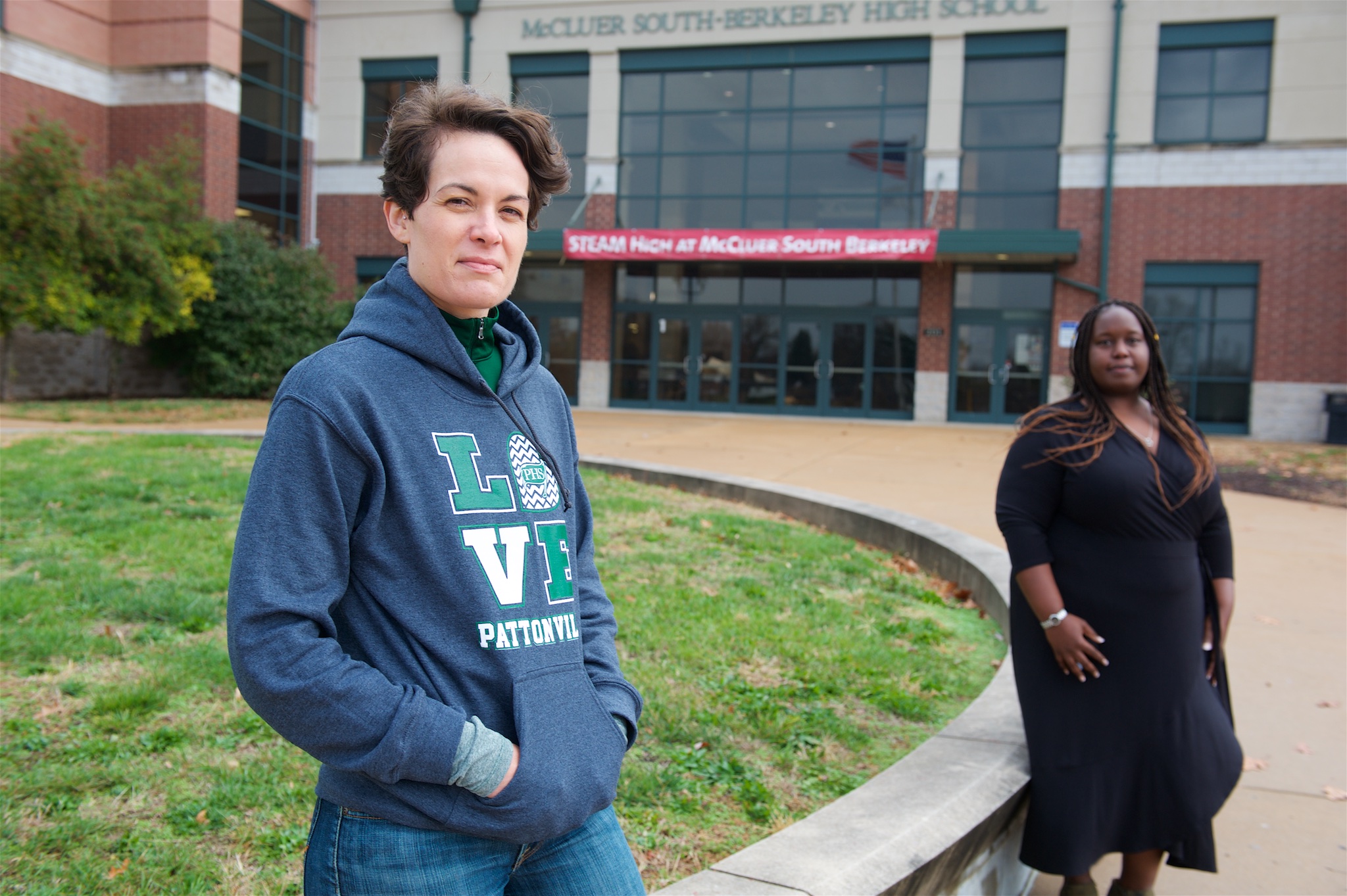
What are your thoughts on the Missouri Education Funding Formula, and should it be changed?
Amanda: I will explain it as simply as I can understand it. What happens every year, and Missouri is not unique, is that there are numbers pulled out of a hat. The state legislators don’t make those numbers. And then they say somehow, magically, they’ve fully funded the schools. It is math that makes no sense to anybody who has ever done basic addition. So the way funding happens for schools genuinely baffles me. Every year, Missouri fails to fund at the expected level and then contends that they have fully funded the schools. Honestly, I wouldn’t have known this without going deep in and I still don’t understand it all. It is something that most people don’t know, that happens underneath all of our noses, and is a significant problem.
The crazy part of the formula is that it goes off of school attendance. Even under those things, it’s unequitable. Like, do you look at why the attendance is not where it’s at? Maybe we need more transportation in our school because all the kids can’t get there. Different barriers place numbers a lot lower and yet we can’t get the funding we need. Federal funding is there sometimes, like with Title 1 dollars, so some schools can get certain things. But that formula needs to be looked at to make sure that money for schools that don’t need all of it goes to schools that really need it. For students who academically need a bit more of a push, the only way some of that can happen is with more teachers, teachers who are receiving more money, and more resources in the classrooms. It’s almost like a double-edged sword where the schools that need it the most never get it. Then they continue to stay behind, they’re being measured on being behind, but they can never catch up because they can’t get the money. So, which comes first?
Teachers are absolutely funding individual projects, writing grants, and looking for additional funding. That our teachers are spending their time trying to fund what they need to do rather than focusing on doing what they need to do, bothers me. At the same time, I’m impressed with the spirit and entrepreneurial vision teachers have to make it happen. And it’s not like the administration of the school boards are like, “We don’t want to give you stuff. We’re doing the best we can and the PTO is trying to fund additional little projects.” But when the families of the school district don’t have a lot of money, there’s no place to go. So they have to go to corporations and find other creative ways to make it work. That doesn’t mean that teachers aren’t doing everything that they can to provide a stellar experience for students.
In your experience, do interdistrict conversation and collaborations happen?
Courtney: I would definitely say it needs to happen more. My superintendent has meetings with other superintendents. Especially during COVID, they have been trying to share best practices, what works, what doesn’t work. I would like to see more of an alignment. In my school district, we have nine municipalities. We need to first work with getting our community together and stronger before we can even tap into other school districts. It’s also the school’s part to prove to the community that we do know how to educate our children well. The other piece is we really need to start working together as St. Louis County. We have some stellar programs in all different school districts. For teachers to speak with teachers, for students to work with students, there’s always room for St. Louis to come together instead of working in silos. For example, if you think about it, all of us have transient populations. In the North County area, you might have a kid who starts off at Ferguson-Florissant for elementary, Hazelwood for middle school, and by the time they graduate, they might even end up at Parkway. We need to start aligning some of them and try to just get a better step up because it matches what families are doing. Usually, what happens is a family might start in a smaller district, but they’re trying to improve and end up at a Parkway. So, how do we prepare our children to really navigate all of those avenues?
Amanda: There’s an interest in this moment and it is a pre-COVID interest. I was lucky to be roped into a group of people working over the past year and a half to slowly build out a professional learning community by which school boards across the region come together on Saturday and learn about best practices and what’s working for different districts. Everyone has the challenge of time, whatever politics might be involved, and whether it’s a risky decision to talk to other school boards. To what Courtney said, so many young people and families are moving in and around and through different school districts. And it behooves us to coordinate and learn better from one another to make that experience for the students more seamless.
There is movement and momentum to have more conversations and to really have some listening and respect for what other school districts are doing. I don’t have a lengthy, decades-long experience in St. Louis. But since I’ve been here, I’ve heard people say, “I have pride in where I’m from. And, also, that other school district — how can we steal what they’re doing? Because they’re awesome and we want to be even better!” I will tell you, and Courtney alluded to this earlier, there could be some better interdistrict transportation systems. I can’t tell you the weird things that happen with transportation for homeless and transient students — it’s complicated. And if we can work together on some of these interdistrict challenges, it would be profound.
Courtney: The decisions we make on a school board are hard. For many of us, we’re bringing all of our baggage, knowledge, understanding, past relationships, and our own experiences, and we have to sit at a table with six other people to make one sound decision that is best for each and every child. Just like Amanda said, it takes learning from each other. It takes not only having a good working relationship with your administration but having that with the community and the students we serve. Many think that a school board member goes into their position and they are their own person and they can make a change. But they’re only one person and there are those times when their initiative only gets one vote. “Fix school lunches? I’m going to make sure ALL of this happens!” And then the only thing you get is that one vote, so you sit there like, “Wow!” And with that one vote, you get a free meal every now and then. But, at the end of the day, this role is so rewarding. I got to speak at my son’s graduation last year. And after my speech, so many students came back to me saying, “I cried. What you said meant so much.” That has been one of the most rewarding things as a board member.
Not only are we thinking about our students, but we’re also thinking about our teachers, support staff, and the community. If we brought students back too soon, it could devastate a whole community.
Dr. Courtney Graves
The work is hard, but I love being a school board member. Even now during this COVID experience, we get those little emails that say, “Thank you for thinking of us. Thank you for making that decision. We’re scared to go back. The students are not ready to go back.” There were decisions I had to make and they weren’t easy because there are so many things we have to think about and it’s people we have to think about. Not only are we thinking about our students, but we’re also thinking about our teachers, support staff, and the community. If we brought students back too soon, it could devastate a whole community.
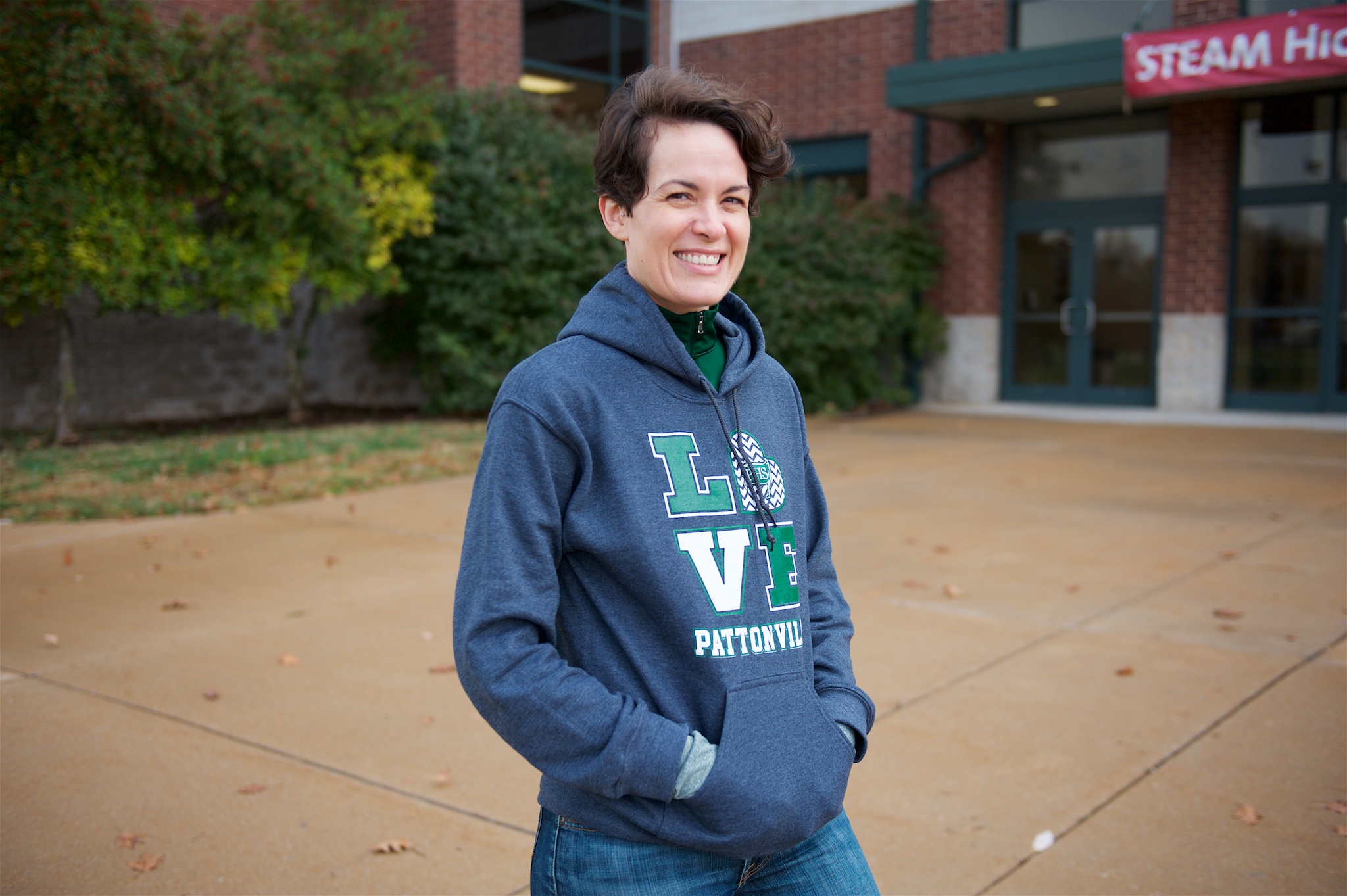
Amanda: You’re one of seven. And it’s still surprising the number of people who come up to me like, “Hey, can you make this happen?” “No, I can’t. I do not have power.” You can have a conversation, and that is a form of power, so I don’t want to ignore that. And people respond to me in a different way because of that, but I am one of seven. At the same time, there are so many heart-wrenching decisions to be made about a young person’s future. The worst and most difficult for me are individual decisions that come to the board about one student. I miss the times where we could have a board meeting full of handing out awards, because that’s not a thing anymore.
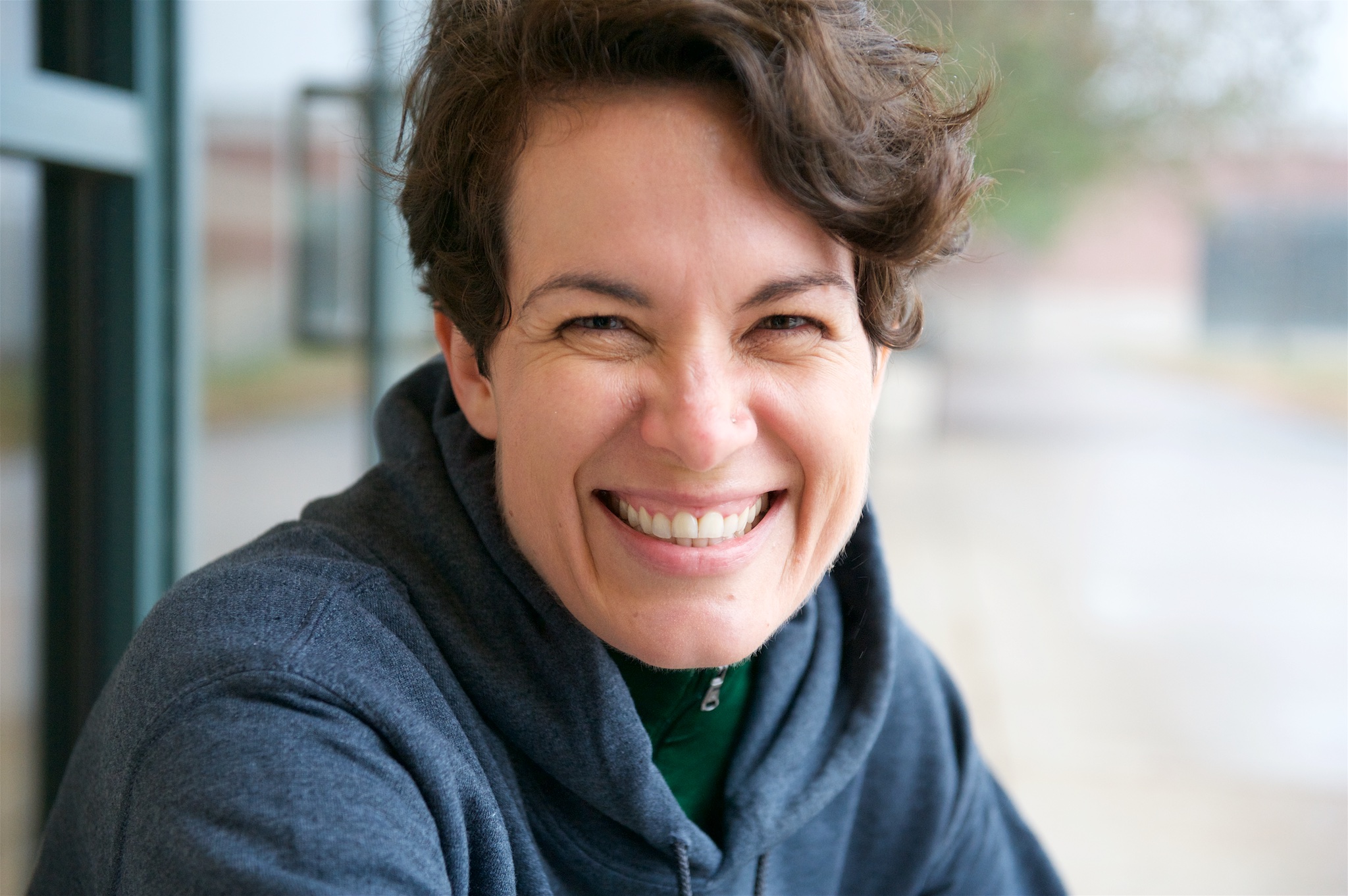
What’s been your biggest accomplishment being on the school board, even if it was hard?
Honestly, running for the school board was a huge deal. I took probably 70 takes of my stupid video. I felt like, “I hate this! I hate having my face out there. I hate the whole idea of being a public figure. I’m a private person and I like it that way.” Now, I’m really grateful for how I can benefit my community and be a part of it in a deeper, public way. In the beginning, being on stage and having people ask me to stand up at events, I was like, “Why am I doing this to myself? Is it all worth it?” But every single day, I think, “What an amazing group of humans.” And I’m always so pleased that I decided to break open past the ideas of what I thought were possible for me. There are moments when I, as Dr. Purnell, and the other Dr. Purnell, my spouse, show up and I see the kids look at me and my family, thinking, “Wow, this is possible. There are so many different ways to be in this world. I too could be somebody. I could do something.” And every single time I’m handing out a little certificate of achievement. I’m just the happiest person on the planet.
What is your vision for an equitable #STL2039?

Courtney: Ya know, it was a fight and I’m glad we got it, but I started the Ferguson-Florissant School District Equity Committee. And if it wasn’t for this committee pushing things, my school district might not be where we’re at right now. It started off with about 10 people meeting twice a month. Now we range between 19 and 24 members including administration, teachers, support staff, counselors, social workers, parents, and stakeholders and we’re able to put equity at the forefront of everything we do. We haven’t been able to get the voice of the students yet, but that’s definitely going to come. I think about all the hats I wear and Maslow’s hierarchy of needs when I say that, for my community, what’s needed first is to make sure we are stabilized, that no child is hungry, that trauma is addressed, and that if families have needs, the community’s meeting those needs. If all of that is not taken care of before a student enters our classrooms, there’s no way they can be able to learn.
We have to go back to community schools in which everybody looks out for the students. If a family needs something and the school can’t provide it, the community will. There are so many schools flourishing just because they have a washing machine and a dryer. Or, they have a food pantry so kids can take food home for their families. I think about after-school programs and our single-parent homes and grandparents that need additional assistance providing for their grandchild that they now have to raise. I often talk about having enough social workers or counselors that match School Resource Officers. So, my vision for #STL2039 is to take care of the whole child and the family. And I’ll even take it a step further to say we break cycles and change systems. If a parent needs education, we’re not only educating the child but the parent, too. What I love about my school district is that we’re slowly doing some of those things. We’ve just got to get into it on a high level where it’s noticeable and having an impact. Then we are truly changing a whole community, one student at a time.
My son just asked me today if was I running for my position again? And he was like, “Just tell them you only did it in the first place because you wanted to sign my diploma!” He was like, “You’re done.” But, I can’t walk away right now. It’s like you finally get to a point where you can see all your efforts going in the right direction. And I’m so eager to push this equity lens. The Ferguson-Florissant area has so much history of racial injustice. To be able to sit in meetings now and talk about it and call it out and have such an impact on what can happen for our students, it’s just a great time to be here. I’m not ready to give it up. And if I don’t get reelected, that just means it’s an opportunity for me to become a school district employee. My thing is, how can I not give something back to something that’s giving me so much? I mean, it’s my foundation. I’ve been there since the 4th grade.

Amanda: When we consider the whole human — the context in which they live, the village that supports them — for me, equity is understanding how completely interdependent we are. It’s foolish not to invest and spend time and engage in young people because they are the ones who are going to be living in the world and they live and grow in a context. My hope is in the increasing ways in which we realize it’s not a single, stellar, amazing human being who emerges out of terrible circumstances — blah, blah, blah. There are many more stories about the interdependencies and the ways in which we support a student’s mental health and wellbeing as well as their ability to get food, feel safe, and be welcomed and engaged. If every single young person in St. Louis could feel valued and appreciated and sought after as an important, potential leader for our City and County, that positive messaging of young people as investments, rather than outputs, is what we need.
My children are young now. They’re 8 and 10. So if I’m going to follow them all the way through their education and stay on the board the whole time, then I’m going to be a lifer — which maybe that’s going to be me. But I can’t imagine not being engaged or involved, because schools are a cornerstone of a community. People are so engaged in different social and religious activities, but the school district is something everybody is part of. Whether you have a child in a school or not, the district is part of your community. The potential for positive impact could radiate outward. And there’s a sense of pride in supporting and engaging with other people. So by giving, sharing, or offering my time, that is helping me as much as it’s helping them. My vision is that we all have transformational wisdom that allows us to see the truth of generosity as actually being incredibly selfish and the way that we all benefit.
Dr. Courtney M. Graves, LPC, CRADC
Ferguson-Florissant School District Board member
Dr. Amanda L. Purnell
Pattonville School District Board of Education


